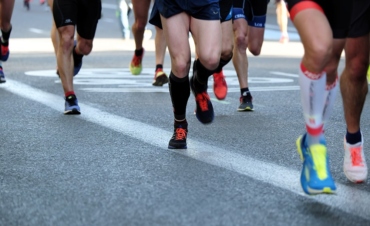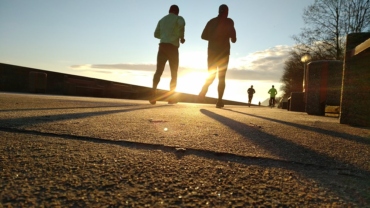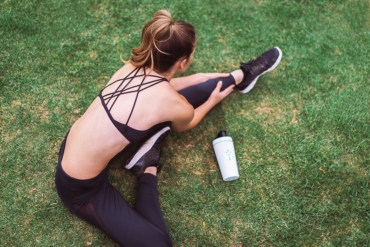We know the “core” to be different muscles that help stabilize the spine and pelvis, but there are specific groups of core muscles that are especially important in running in Toronto and other cities. We call this the “outer unit” or “slings”.
Slings are groups of muscles that cross the pelvis to create dynamic stability during movement. Three of these slings are particularly important in running:
Anterior Oblique Sling (AOS)
- AOS = Hip adductors + internal obliques of the same side + opposite external obliques
- During the swing phase of running, the hip adductors help bring the hip into flexion (knee up to chest), and the internal obliques of the same side + opposite external obliques rotate the trunk towards the flexed hip, creating stability through the pelvis.
- Exercise to work on AOS: Dead Bug, 1X10
Posterior Oblique Sling (POS)
- POS = gluteus maximus + opposite latissimus dorsi
- During the push-off phase of running, the gluteus maximus pushes the hip into extension to propel the body forward while the opposite lattissimus dorsi pulls the shoulder into extension (pulls the elbow back), creating stability through the pelvis.
- Exercise to work on POS: Bridge with alternating knee extension while pushing down into the ground, 1X10
Lateral Sling (LS)
- LS = gluteus medius + opposite hip adductors
- During the stance phase of running, the gluteus medius engages to stabilize the pelvis/hip/knee while the opposite hip adductors engage to begin the swing phase, creating stability across the pelvis
- Exercise to work on LS: Side plank 3X30sec
A strong core allows for more efficient limb movement (i.e. less energy wasted). Adding these exercises to your strengthening programs in Toronto can therefore increase your running efficiency, helping you prevent injuries and improve your performance!
If you’re training for a half-marathon in Toronto, or looking to extend your running exercises further, check out our most recent blog post from Victoria, one of our Top Rated Physiotherapists recent blog here: https://www.totum.ca/half-marathon-training/
Looking for programming & training advice during these times? Totum is offering Virtual Training & Programming Services Here!














